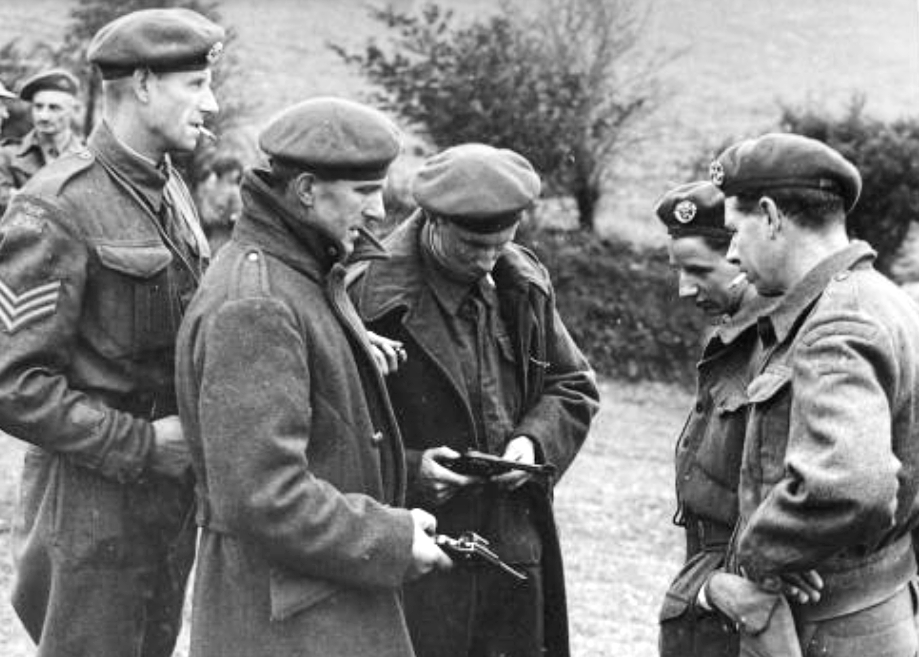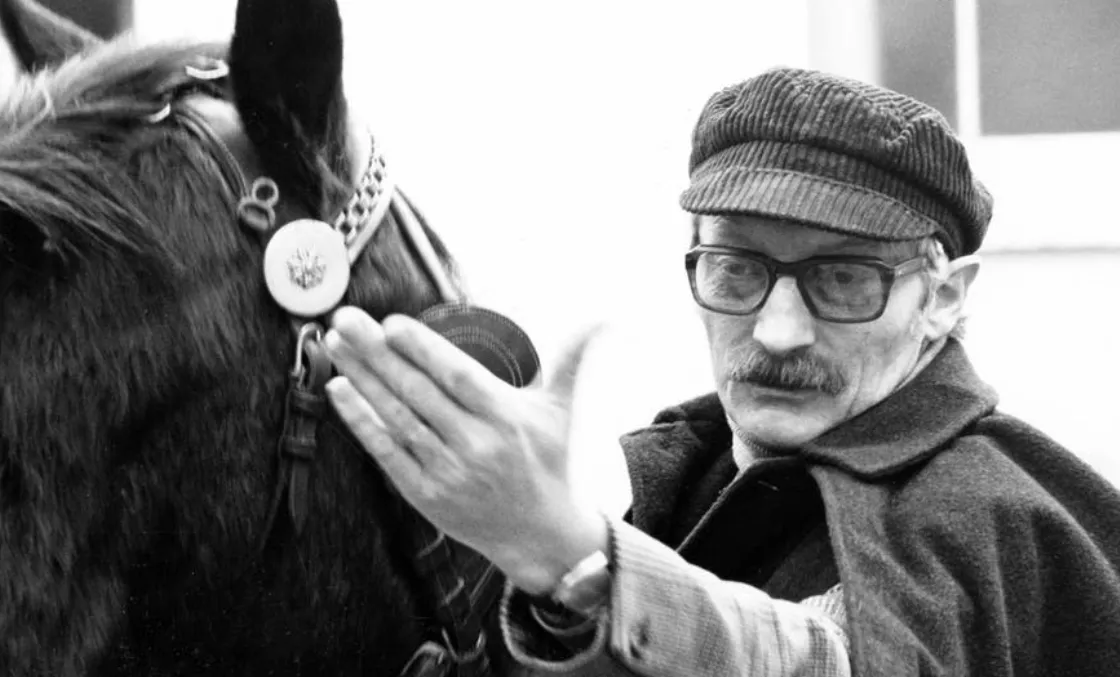Spies and Saboteurs: The CIA Plot to Defend Europe From the Soviets
Still rattled by WWII and fearful of a Soviet invasion, the CIA rolled out a top-secret operation across Europe in the 1950s at the start of the Cold War. ‘Stay-behind networks’ of underground militia were to be secretly trained in sabotage and supplied with weapons and radios to prepare for war.
“These nets had to be coordinated with NATO’s plans, their radios had to be hooked to a future exile location, and the specialized equipment had to be secured from the CIA and secretly cached in snowy hideouts for later use,” William Colby, the CIA's former director, wrote in his autobiography Honorable Men.
Colby was in charge of building Scandinavia’s stay-behind nets, a tricky operation since Sweden and Finland weren’t NATO members - a position both countries would reconsider decades later after Vladimir Putin and Russia invaded Ukraine in 2022. Colby pushed ahead regardless. If the CIA needed to, the Agency would either go it alone or use 'unofficial' local help to avoid protests from Soviet diplomats and Scandinavians who hoped neutrality would let them slip through WWIII unharmed, he said.
“I was instructed to limit access to information about what I was doing to the smallest possible coterie of the most reliable people in Washington, in NATO, and in Scandinavia,” Colby recalled.

Sabotage plans in Ukraine, the Baltics, and Britain
The CIA’s Scandinavian op was just a small part of a much bolder plan to arm thousands of resistance fighters in Europe. The wide-ranging, top-secret mission - involving NATO, the UK, France, Germany, Italy, and many other countries and spy agencies - later became known as Operation Gladio after Italy’s stay-behind net was exposed. Scandinavia, it seemed, was just the start.
“The activity in Europe was just as vigorous,” Colby said. “For example, the CIA clandestinely supported the development of an anti-Communist resistance movement in the Ukraine, and occasionally - by parachute or PT [patrol torpedo] boat - delivered agents to the Baltic countries. A major effort to break Albania out of the Curtain by stirring up a revolt against the Communist regime there was underway.”
British stay-behinds
Britain was well ahead of many countries as it had been training secret stay-behind armies since at least WWII.
"The brand new social experience where you activate your gaming skills as you train like a spy."
- TimeOut
Take on thrilling, high-energy espionage challenges across different game zones.


Britain's 'stay behinds'
Ken Welch was only 16 when he joined his father’s eight-man team of saboteurs based in a tiny village in Cornwall, England. Now 94, Welch recalled their secret underground bunker on the outskirts of town and plans to disrupt invaders by blowing up fuel and ammunition dumps, railways, airfields, aircraft, vehicles - anything to slow down the advance. In the event of an invasion, unit members who evaded Nazi capture had a life expectancy of two weeks, the extent of their food rations.
After WWII, Britain trained Italian militants responsible for the Operation Gladio stay-behind nets at a UK military base and visited Italy soon afterward in 1974, according to a senior Italian military intelligence official, General Gerardo Serravalle, who testified before a parliamentary committee in Rome in 1990.
Documents shown to the committee revealed that in the 1970s British and French officials involved in the network also visited a training base in Germany which was built with US money.
Governments in exile
The CIA envisioned the stay-behind nets operating on home turf while European governments were set up in exile with communication via radio, the Agency’s William Colby wrote in his autobiography.
Swiss spymaster Albert Bachmann illustrated how that plan might work in practice when it was discovered that he planned to move gold out of Switzerland to prepare for a Swiss government-in-exile in Ireland.
Dipping into government funds, Bachmann bought Cork’s 200-acre Liss Ard Estate, deeming it an ideal location for the Swiss government to operate should there be an invasion or nuclear war.

Swiss spymaster Albert Bachmann
Bachmann was also in charge of Switzerland’s Projekt-26, an illegal paramilitary program that trained a guerilla-style force who operated in 40 Swiss regions under Bachmann’s command. The Swiss militants were exposed in 1990 and described by Schweizer Illustrierte magazine as: “The secret army of the EMD spies: 2,000 men and women, trained in planting bombs and silent killing."
EMD stood for Eidgenössisches Militärdepartement - the federal military department - and the Swiss Parliament soon set up a commission that confirmed P-26’s existence.

Operation Gladio’s day of reckoning?
Various parliamentary inquiries were called. Outrage was expressed. Secret armies were disbanded. But was it all for public show?
The leader of Sweden’s covert army, Otto Hallberg, was arrested and charged with promoting terrorism. Hallberg predicted - quite rightly - that higher authorities would prevent any detailed investigation or court action as “no Swedish official wanted news to surface concerning the extent to which the Swedish government remained under the direct sway of the CIA and NATO,” according to Paul L. Williams' book Operation Gladio.
An investigation into Albert Bachmann’s illegal P-26 saboteurs concluded that Switzerland’s militias had intense ties to British agents: “It is alarming that the British services knew more about P-26 than the Swiss government did," investigators wrote at the time. Bachmann went quietly however. He retired to Cork, Ireland where he ran a horse-riding school.
Since then, Swiss archive records about P-26 have mysteriously vanished.
SPYSCAPE+

Join now to get True Spies episodes early and ad-free every week, plus subscriber-only Debriefs and Q&As to bring you closer to your favorite spies and stories from the show. You’ll also get our exclusive series The Razumov Files and The Great James Bond Car Robbery!


Gadgets & Gifts
Explore a world of secrets together. Navigate through interactive exhibits and missions to discover your spy roles.
Your Spy Skills
We all have valuable spy skills - your mission is to discover yours. See if you have what it takes to be a secret agent, with our authentic spy skills evaluation* developed by a former Head of Training at British Intelligence. It's FREE so share & compare with friends now!
* Find more information about the scientific methods behind the evaluation here.


Stay Connected
Follow us for the latest
TIKTOK
INSTAGRAM
X
FACEBOOK
YOUTUBE